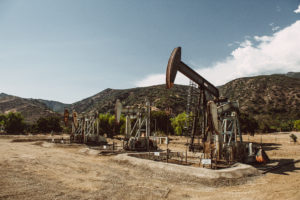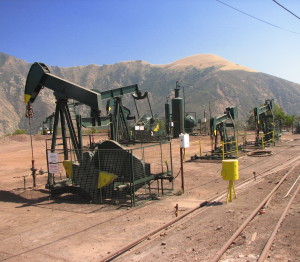Our Oil Oversight Program
Oil and gas drilling has quickly become one of the most imminent threats to the Los Padres in decades, and has the potential to significantly alter these public lands. We’re dedicated to halting any further expansion of oil and gas drilling in our national forest.
Where existing oil drilling is allowed to continue, we promote improved management practices to protect wildlife, recreation, watersheds, and other environmental values. We’re conducting a forest-wide inventory of current drilling sites to make sure the oil companies are complying with environmental laws.
Impacts of Oil Drilling
The last two decades have seen an explosion in the amount of oil and gas drilling in national forests. In 2004, the federal government approved a record number of drilling permits, giving away more than 40 million acres of our public lands to oil corporations. A recent analysis of government records shows that two-thirds of our natural treasures — like national forests, national wildlife refuges, roadless and wilderness areas, and national monuments — are suffering from substantial amounts of oil drilling and industry control.
As oil and gas drilling spreads, it comes into increasing conflict with other land uses, such as ranching, farming, and recreational activities. Air pollution (nitrogen oxides, methane, and particulate matter), displacement of wildlife, unpredictable leaks and spills, and damaged waterways already plague existing drilling sites across the country.
These impacts are greatly magnified by hundreds of miles of roads and pipelines and construction of massive pumping facilities.
Oil and gas drilling significantly impacts wildlife habitat. Well pads and compressor station complexes denude the land of vegetation, causing soil loss, increased erosion, and the opportunity for weed infestation. Wells typically require many miles of access roads, pipelines, and power lines, transforming pristine areas into industrial sacrifice zones. Moreover, oil and gas drilling can contaminate soil, groundwater, and rivers.
All to quench our country’s growing thirst for oil – Americans use 23.5 million barrels per day, and it’s forecast that our consumption will increase by 1.8% every year until 2050. Alternatives to increased oil consumption include increasing fuel economy standards in automobiles, encouraging public transportation, energy conservation, and promoting alternative fuels that are less-polluting and not as dangerous to surrounding communities.
Oil Drilling in the Los Padres
The Los Padres contains the only commercial quantities of oil and gas within the national forests of California. Currently, there are 257 active oil wells on the Los Padres covering nearly 4,900 acres. In addition, there are 26 pending oil and gas lease applications covering an additional 23,000 acres.

Oil wells in Santa Paula Canyon — one of the most popular hiking trails in the Los Padres National Forest. Photo by Luke Williams.
Most drilling occurs in the Sespe Oil Field, located right next to the Sespe Condor Sanctuary and the Hopper Mountain National Wildlife Refuge in Ventura County. Both of these sites are extremely valuable for the California Condor Recovery Program. The other major oil drilling area in the Los Padres is the South Cuyama Oil Field in Santa Barbara County.
During the last few years, the Forest Service has studied whether to open up vast swaths of the Los Padres to oil and gas development. In July 2005, the agency issued its final decision to allow new drilling across 52,075 acres of pristine forest lands. The new drilling areas are next to some of the most sensitive areas of the forest, including the Sespe Condor Sanctuary, the Hopper Mountain National Wildlife Refuge, and four wilderness areas.
By the agency’s own calculations, this new drilling would produce less than a day’s supply of oil at our nation’s current consumption rates. Such a small amount of oil will do little to bring our country closer to renewable fuels or energy independence, or reduce gas prices.
New drilling threatens vital habitat for at least 13 federally-listed threatened and endangered species, as well as recreation, clean water, and important cultural sites. Over $35 million has been spent on the Condor Recovery Program, an investment too great to risk for a few drops of oil.







